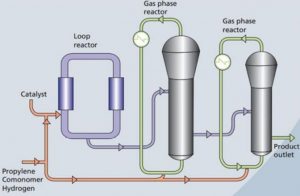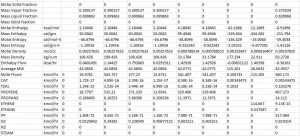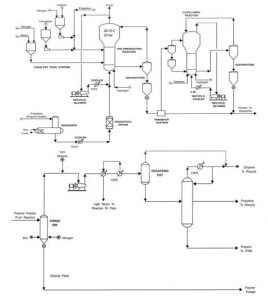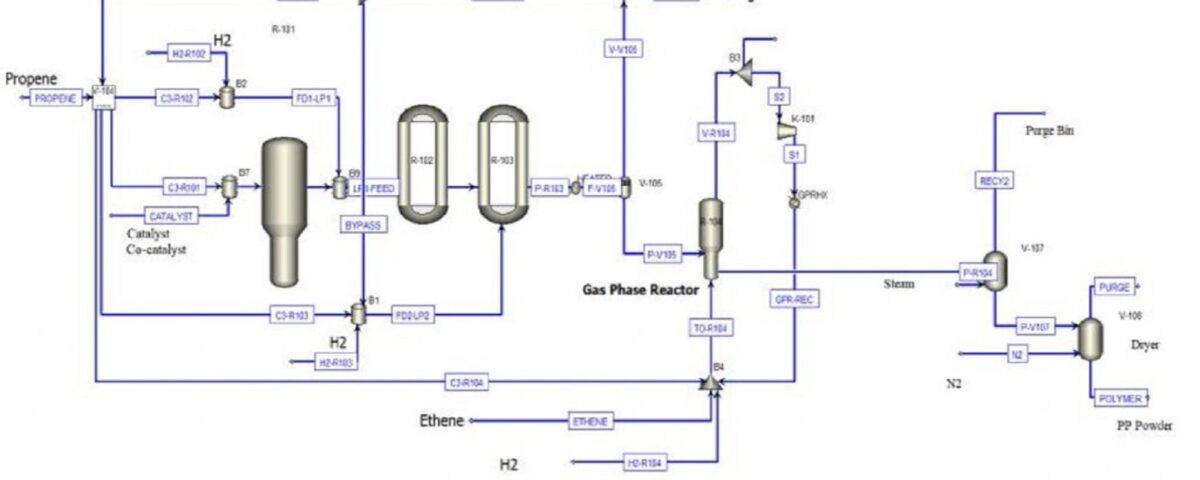Description
The growth of polypropylene production capacity is predicted to be 5.7% from 2000 to 2010 AD, while the growth of demand is predicted to be 7%. With this amount of growth, polypropylene will be one of the fastest growing thermoplastic resins in the world. This growth is due to the extensive properties of polypropylene, the abundance and relatively low costs of polypropylene production. The purpose of this report is to investigate the pre-feasibility of the industrial unit for the production of polypropylene from propane and hydrogen feed.
In this project, first a brief review about propylene and feed materials and various processes has been reviewed. And then with Aspen Plus simulation around the selected process, this unit is simulated. And then, with the help of the calculation principles of factory design (Peters book), he made an accurate estimate of the costs and economic conditions of the unit. we will express the results in the main simulation, output data, TCI tables and overall investment.

Polypropylene Production Processes
In this section, we will pay attention to the three main applied processes in the polypropylene industry. which include Spheripol, Unipol and Novolen. These processes have the ability to produce propylene of the type, homopolymer, resistant copolymer, copolymer and copolymer with a rubbery matrix phase. Spheripol process uses two plug flow reactors with a floating bed gas phase reactor to produce resistant polypropylene copolymer. Unipol process uses two floating bed gas phase reactors.
Finally, the Novolen process uses two gas phase reactors with a vertical mixed floating bed. The design capacity for each of these processes is assumed to be 200,000 y/t. Zieglernata and metallocene catalysts have both been evaluated. In addition to this special catalyst, the second generation of metallocene has also been evaluated.
For Unipol process, SHAC type Zieglernata catalyst, for Novolen process, PTK PTK type Zieglernata catalyst, and for Spheripol process, advanced Basel 4th generation catalyst or 5th generation Ziegler Nata catalyst were used. The metallocene catalyst system was used equally in the evaluation of all processes.
Investment Comparison and Process Selection
In this section, the comparison of investment for Zieglernata catalyst system for the 200,000 tons per year plan has been investigated. The technical facilities for catalyst production are not considered in the investment. Because basically, polypropylene producers buy catalyst from catalyst manufacturers.
The investment within the BLi range is divided into two investment sectors, the polymerization sector, the polymer purification and completion sector, and the packaging sector. The completion and purification section is considered the same for all three processes. After the investigations, the Spheripol process has been selected for the production of polypropylene. The figure below shows a part of the economic analysis.

Spheripol Unit Process
The production process of polypropylene in the form of Spheripol will be fully investigated in this project. Figures below show the maps of the Spheripol unit. The use of circulating reactors of complete integrated units from the final purification of this product clearly shows the distinction between rest of the processes.
The entire Spheripol process is divided into 5 different main parts:
LOOP REACTOR
Recovery and separation of propylene
Dryers
Copolymer reactor and ethylene injection unit to the main unit
The Spheripol unit map is shown below:

In this project, the production of polypropylene as Spheripol is simulated in Aspen Plus software. This project has a complete report.
